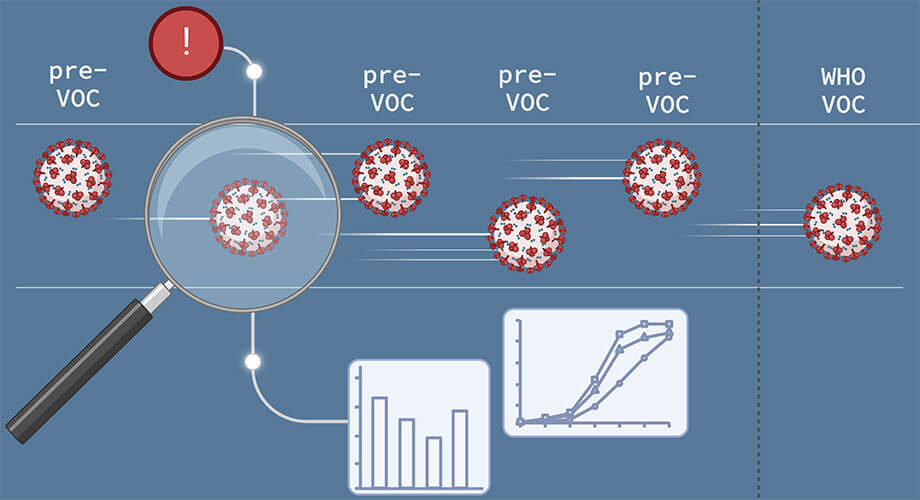LA JOLLA, Calif. — Scientists in California have developed a pandemic “early warning system” utilizing artificial intelligence (AI). Upon examining COVID-19 data with this system, researchers discovered that they could have detected “variants of concern” ahead of their official designation by the World Health Organization.
The research team from Scripps Research Institute believes that their system can identify potential viral pandemics in the early stages before they become worldwide crises. Their machine-learning system, a form of AI application, is capable of tracking the intricate evolution of epidemic viruses and predicting the emergence of variants that could pose a threat to the general public.
“There are rules of pandemic virus evolution that we have not understood but can be discovered, and used in an actionable sense by private and public health organizations, through this unprecedented machine-learning approach,” says study senior author William Balch, PhD, professor in the Department of Molecular Medicine at Scripps Research, in a media release.
The system can utilize data from publicly available repositories and newly discovered genetic data. The study, published in the journal Cell Patterns, indicates that the software allowed the researchers to monitor sets of genetic alterations appearing in SARS-CoV-2 variants — the virus causing COVID — globally.
The researchers developed machine-learning software using a technique known as Gaussian process-based spatial covariance. This software related three data sets recorded over the course of the pandemic: the genetic sequences of SARS-CoV-2 variants found in infected individuals worldwide, the frequency of these variants, and the global COVID-19 mortality rate.

The team observed trends that typically indicated increased transmission rates and decreased mortality rates. These trends reflect the virus’ adaptation to lockdowns, mask-wearing, vaccination programs, the rise in natural immunity in the global population, and the ongoing competition among various SARS-CoV-2 variants.
“We could see key gene variants appearing and becoming more prevalent, as the mortality rate also changed, and all this was happening weeks before the VOCs containing these variants were officially designated by the WHO,” Balch says.
“One of the big lessons of this work is that it is important to take into account not just a few prominent variants, but also the tens of thousands of other undesignated variants, which we call the ‘variant dark matter.’”
The team suggests a similar system could be used to closely monitor the evolution of future viral pandemics in real-time. This could enable scientists to predict changes in a pandemic’s trajectory, such as significant increases in infection rates, in time to implement countermeasures.
The team is optimistic that their approach can contribute to a deeper understanding of virus biology, thereby promoting the development of more effective treatments and vaccines.
“This system and its underlying technical methods have many possible future applications,” Dr. Ben Calverley says.
You might also be interested in:
- ‘Brain-altering bioweapons’ to DNA surveillance: Experts already preparing for next biological threat
- Another pandemic in 2028? Scientists discover ‘pocket’ that may stop future coronaviruses
- AI finds drugs that could fight aging and age-related diseases
South West News Service writer Jim Leffman contributed to this report.


Now they can start lockdowns before a pandemic even starts!